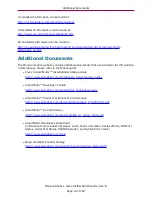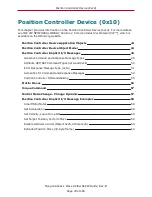
Cable Diagram
Cable Diagram
This section describes the cabling information for adding a SmartMotor to an EtherNet/IP net-
work.
CAUTION:
To minimize the possibility of electromagnetic interference (EMI),
all connections should use
shielded
Ethernet Category 5 (Cat 5), or better,
cables.
EtherNet/IP Cable Diagram
The following diagram shows an example EtherNet/IP network with the SmartMotors daisy
chained to the EtherNet/IP master device. An optional "ring" configuration can be created if
the EtherNet/IP master device has two ports.
EtherNet/IP Bus
Other EtherNet/IP device:
- I/O block,
- Servo drive,
- etc.
EtherNet/IP Master
- PC,
- PLC,
- etc.
Moog Animatics
SmartMotor
Moog Animatics
SmartMotor
Optional ring for cable redundancy*
*Ring configuration requires an EtherNet/IP master with two ports
NOTE: Either Ethernet port can be used
to daisy-chain the motors.
Example Daisy-Chain Configuration
NOTE:
Unlike other fieldbus protocols, EtherNet/IP does not require terminators at
each end of the network bus.
Many network configurations are possible, such as line, tree or star. Requirements for specific
configurations depend on the capabilities of the EtherNet/IP controller devices, the node
devices, types and lengths of cables, and use of other networking equipment. For specific
details on creating an EtherNet/IP network, refer to the ODVA publication
EtherNet/IP Media
Planning and Installation Manual
, which is available on the ODVA.org website.
Moog Animatics Class 6 EtherNet/IP Guide, Rev. B
Page 28 of 160
















































